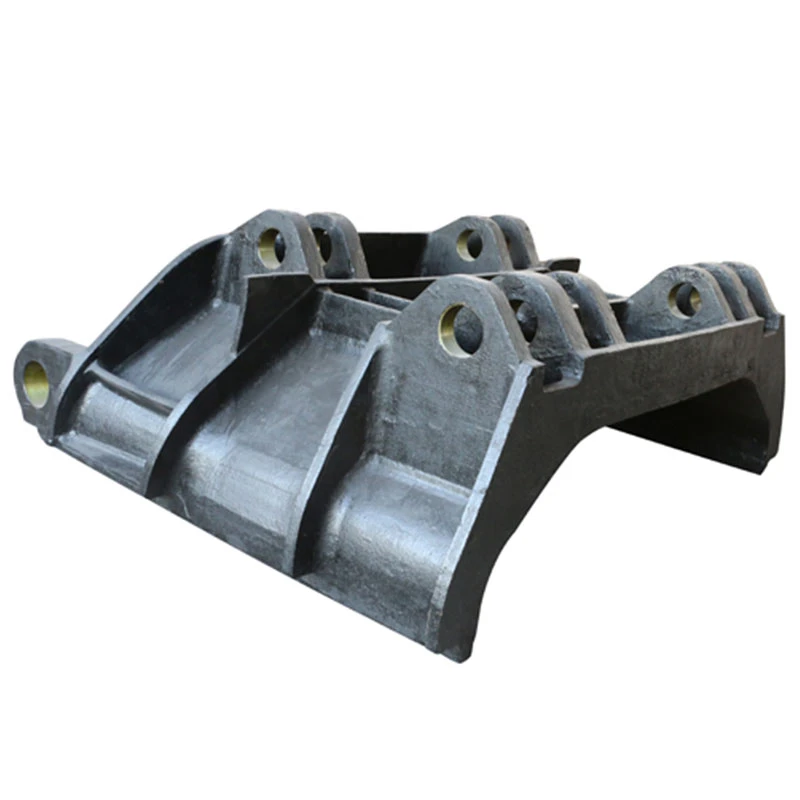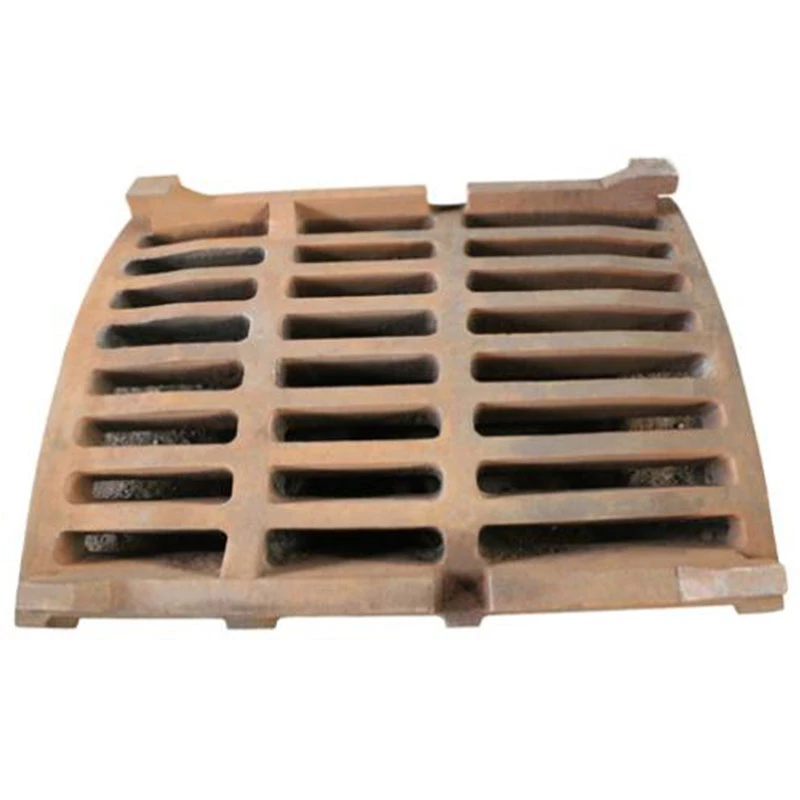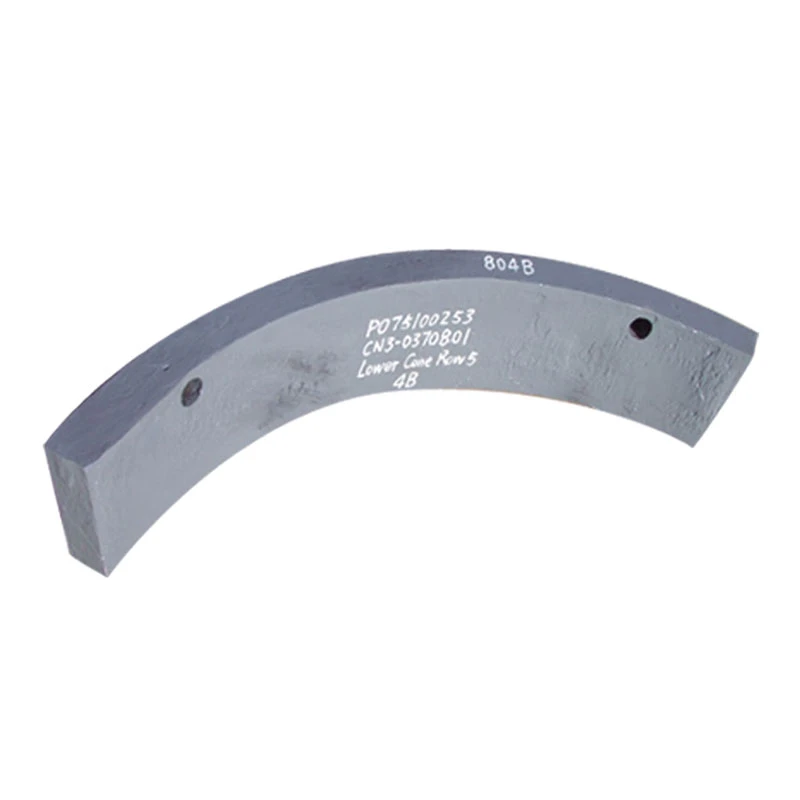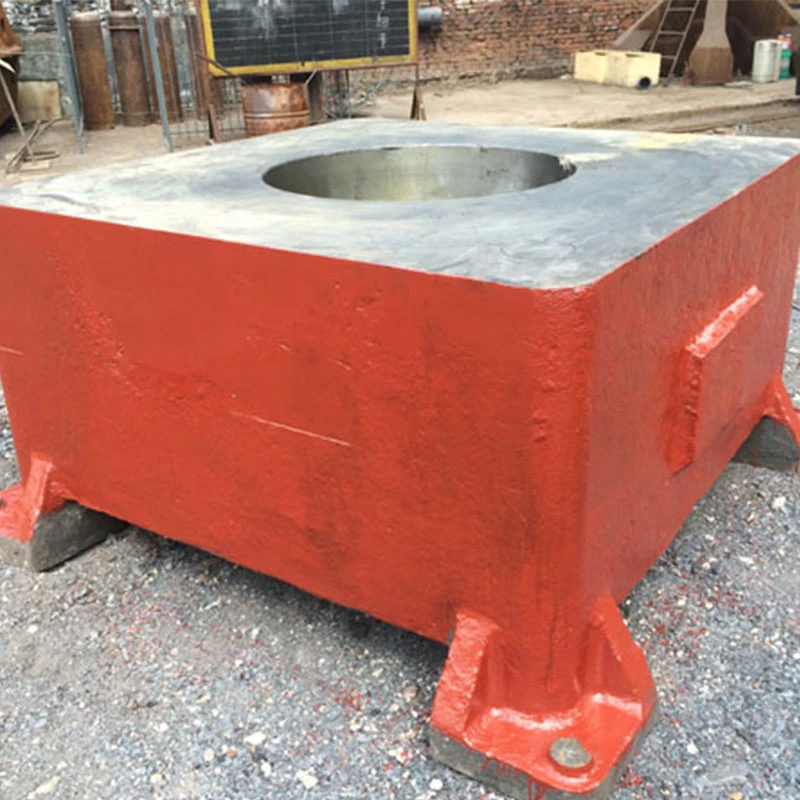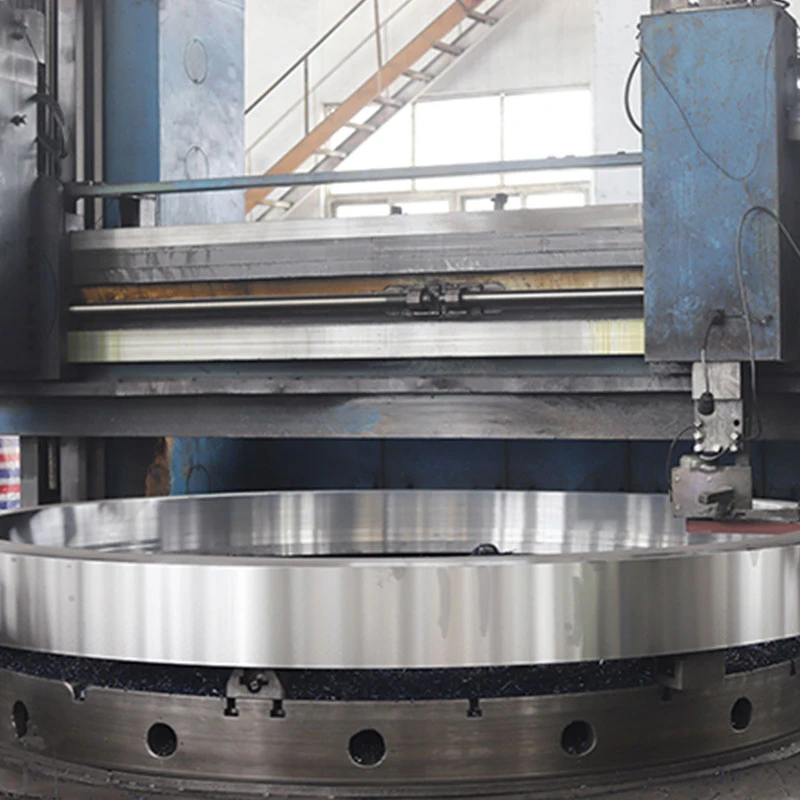- Afrikaans
- Albanian
- Amharic
- Arabic
- Armenian
- Azerbaijani
- Basque
- Bengali
- China
- China (Taiwan)
- Czech
- Danish
- Dutch
- English
- French
- German
- Greek
- Gujarati
- Haitian Creole
- hausa
- Miao
- Hungarian
- igbo
- Indonesian
- Italian
- Japanese
- Javanese
- Rwandese
- Korean
- Kyrgyz
- Lao
- Lithuanian
- Luxembourgish
- Macedonian
- Malgashi
- Malay
- Mongolian
- Myanmar
- Nepali
- Norwegian
- Persian
- Polish
- Portuguese
- Punjabi
- Russian
- Spanish
- Swahili
- Swedish
- Telugu
- Vietnamese
Aug . 10, 2025 06:00 Back to list
MC Low Air Pressure DTH Bits: Superior Performance & Durability
Introduction to Optimized Drilling with Low Air Pressure DTH Bits
In the demanding world of drilling and excavation, the efficiency and cost-effectiveness of down-the-hole (DTH) drilling operations are paramount. Traditionally, DTH hammers and bits have relied on high air pressure to achieve percussive action, which, while effective, often incurs significant operational costs related to compressor power consumption and wear. The advent of low air pressure DTH drilling technology marks a significant paradigm shift, offering a more sustainable and economically viable solution for a broad spectrum of drilling applications. At the heart of this innovation lies the specialized MC Low air Pressure DTH Bits, engineered to optimize performance even under reduced air input. These bits are not merely a scaled-down version of their high-pressure counterparts; they represent a complete redesign of the bit face, button configuration, and internal air distribution channels to maximize energy transfer from a low-pressure air source. This meticulous engineering ensures that even with less compressed air, the bit maintains superior penetration rates, enhances hole quality, and extends service life, directly contributing to lower overall drilling costs. The core challenge in DTH drilling is efficiently transmitting the hammer's percussive energy to the rock formation via the bit, coupled with effective rock chip evacuation. Low air pressure systems address this by optimizing the air flow and impact mechanism to work synergistically at reduced pressures, typically ranging from 7 to 15 bar (100 to 220 psi), whereas high-pressure systems often operate above 20 bar. This reduction in required air pressure translates directly into smaller, more fuel-efficient compressors, or the ability to operate existing compressors at lower loads, drastically cutting fuel consumption and emissions. Furthermore, the reduced stress on both the compressor and the drill rig's pneumatic system leads to decreased maintenance frequency and extended equipment lifespan. The design of specific components, such as the bit body, carbide buttons, and internal flushing channels, is crucial for low air pressure operations. For example, optimized flushing slots ensure efficient removal of cuttings even with lower air volume, preventing re-drilling of material and maintaining consistent penetration. The carbide buttons are selected not only for their hardness and wear resistance but also for their geometry and protrusion, which dictate how effectively they crush and fracture rock under specific impact energies delivered by a low-pressure hammer. Understanding these intricacies is vital for selecting the right tooling for an operation, as the synergy between the hammer and the bit is the bedrock of drilling efficiency. This comprehensive article delves deep into the specific advantages, technical specifications, manufacturing precision, and diverse applications that make the MC Low air Pressure DTH Bits a preferred choice for modern drilling professionals seeking to enhance their operational sustainability and economic returns.
Evolving Industry Trends and the Role of MC Low Air Pressure DTH Bits
The global drilling industry is undergoing a transformative period, driven by converging demands for increased efficiency, reduced environmental impact, and enhanced safety. Key trends include the push for automation and digitalization, the stringent enforcement of environmental regulations, and the perpetual quest for lower operational costs. In this evolving landscape, drilling tools capable of delivering performance while minimizing resource consumption are gaining significant traction. The shift towards sustainable mining and construction practices necessitates innovations that reduce energy consumption and carbon footprints. Conventional high-pressure DTH drilling, while powerful, consumes vast amounts of compressed air, leading to high energy bills and substantial greenhouse gas emissions from the compressors' prime movers. This is where MC Low air Pressure DTH Bits emerge as a critical enabler for sustainable operations. By operating effectively at significantly lower air pressures, these bits drastically reduce the energy required to generate compressed air, directly contributing to lower fuel consumption in diesel-powered compressors or reduced electricity consumption in electric ones. This aligns perfectly with the industry's drive for greener technologies and operational excellence. Furthermore, the focus on smart mining and construction involves integrating sensors and data analytics to monitor drilling parameters in real-time, optimizing processes for maximum output and minimal waste. Bits designed for low-pressure systems often offer more stable drilling, which provides more consistent data for these analytical systems, enhancing predictive maintenance capabilities and overall site management. The demand for greater precision in drilling, particularly in applications like pre-split blasting or foundation piling, also favors low air pressure systems due to their ability to maintain better hole straightness and accuracy. Reduced air turbulence and less aggressive impact can lead to fewer deviations, ensuring that boreholes align precisely with engineering plans. This precision minimizes over-drilling or re-drilling, further saving time and resources. As mineral reserves become more challenging to access—often deeper or in harder rock formations—the longevity and durability of drilling tools become even more critical. Manufacturers are investing heavily in metallurgy and heat treatment processes to extend the service life of DTH bits. For MC Low air Pressure DTH Bits, this means selecting highly abrasion-resistant tungsten carbide inserts and developing robust bit body designs that can withstand the stresses of continuous percussive drilling in abrasive conditions. The trend of urbanization and infrastructure development also contributes to the rising demand for efficient drilling solutions. Projects like tunneling, road construction, and utility installations require versatile and reliable drilling equipment that can operate efficiently in diverse geological conditions and often in noise-sensitive environments. Low air pressure systems inherently generate less noise than their high-pressure counterparts due to reduced airflow velocity and lower impact energies, making them ideal for urban projects where noise pollution is a concern. The global supply chain dynamics and the imperative for operational resilience have also highlighted the importance of reliable, long-lasting tools that reduce the frequency of replacements and minimize downtime. Therefore, the strategic integration of MC Low air Pressure DTH Bits into drilling fleets is not just a tactical decision for immediate cost savings but a strategic move towards a more sustainable, efficient, and technologically advanced drilling future.
Technical Parameters and Key Specifications of MC Low Air Pressure DTH Bits
Understanding the technical parameters of MC Low air Pressure DTH Bits is crucial for optimal selection and performance in diverse drilling environments. These parameters dictate the bit's compatibility with DTH hammers, its suitability for specific rock formations, and its overall drilling efficiency and longevity. The fundamental design considerations for low-pressure bits revolve around maximizing energy transfer and efficient cuttings evacuation with reduced air volume. Key parameters include the bit diameter, which defines the size of the borehole, typically ranging from 76mm to 203mm (3 inches to 8 inches) for general low-pressure applications, though specialized sizes can extend this range. The shank type, such as QL, SD, Mission, or DHD, determines the compatibility with various DTH hammers; selecting the correct shank is paramount for secure connection and efficient energy transmission from the hammer to the bit. The face design of the bit is another critical technical parameter, significantly influencing penetration rate, hole straightness, and bit life in different rock types. Common face designs include flat face, convex face, concave face, and drop center. A flat face is generally suitable for hard, abrasive rock formations, providing good wear resistance. A convex face enhances penetration in softer to medium-hard rocks but may experience faster wear. A concave face offers excellent hole straightness and is preferred in fractured or heterogeneous rock conditions, while a drop center design is ideal for maintaining hole straightness in soft to medium-hard rock and minimizing deviation. The button configuration, referring to the number, size, and arrangement of tungsten carbide buttons on the bit face and gauge, is meticulously engineered for low air pressure operations. Buttons are typically available in various shapes: hemispherical buttons for general-purpose drilling, ballistic buttons for faster penetration in softer rocks, and parabolic buttons for a balance of speed and durability. The grade of tungsten carbide used for these buttons is chosen for its specific properties of hardness, toughness, and wear resistance, tailored to withstand the percussive and abrasive forces encountered during drilling. For low-pressure applications, the button layout is optimized to ensure efficient rock breakage with lower impact energy, often featuring fewer, larger buttons strategically placed to maximize impact force while still providing ample flushing channels. Flush holes, which allow compressed air to pass through the bit face to clear cuttings, are designed to maximize airflow efficiency even at reduced pressures, preventing re-grinding of material and ensuring a clean borehole. Additionally, the overall body material—typically high-grade alloy steel—is subjected to advanced heat treatment processes to achieve optimal hardness and fatigue resistance, preventing premature wear and failure. Understanding these intricate technical details allows drilling engineers and site managers to make informed decisions, ensuring the selected MC Low air Pressure DTH Bits are perfectly matched to their specific geological conditions and operational objectives, thereby maximizing productivity and cost efficiency.

Figure 1: Illustration of a typical MC Low air Pressure DTH Bit design.
Typical Specifications for MC Low Air Pressure DTH Bits
| Parameter | Description | Typical Range/Value |
|---|---|---|
| Bit Diameter | The cutting diameter of the drill bit. | 76 mm – 203 mm (3" – 8") |
| Shank Type | The connection type to the DTH hammer. | QL, SD, Mission, DHD, COP, BR Series |
| Operating Pressure Range | Recommended air pressure for optimal performance. | 7 – 15 bar (100 – 220 psi) |
| Face Design | The profile of the bit face. | Flat, Convex, Concave, Drop Center |
| Carbide Button Shapes | Geometry of the tungsten carbide inserts. | Hemispherical, Ballistic, Parabolic |
| Body Material | High-grade alloy steel (e.g., 42CrMo). | Premium Quality Alloy Steel, heat-treated |
| Hardness (Body) | Rockwell Hardness Scale (HRC) for the steel body. | 48-52 HRC |
| Hardness (Carbide) | Rockwell Hardness Scale (HRA) for tungsten carbide buttons. | 89-91 HRA |
| Flushing Hole Design | Configuration of air channels for cuttings removal. | Optimized for low air volume, improved chip evacuation |
| Service Life Factor | Expected longevity under typical operating conditions. | 15-30% longer than comparable high-pressure bits (rock dependent) |
The Precision Craftsmanship of MC Low Air Pressure DTH Bits Manufacturing
The superior performance and durability of MC Low air Pressure DTH Bits are a direct result of an intricate and meticulously controlled manufacturing process, combining advanced metallurgical science with precision engineering. The journey of these high-performance drilling tools begins with the selection of premium-grade raw materials. For the bit body, high-strength alloy steels, often variations of 42CrMo or similar tool steels, are chosen for their exceptional toughness, wear resistance, and ability to withstand the severe percussive and rotational stresses encountered during drilling. These steels are precisely formulated to accept complex heat treatments that imbue them with optimal hardness and fatigue strength. The cutting elements, the tungsten carbide buttons, are sourced from specialized manufacturers renowned for producing high-purity, wear-resistant grades. These carbides are selected based on the specific application, balancing hardness (measured in HRA) with toughness to prevent premature chipping or breakage. The manufacturing process typically involves several critical stages: initial cutting and forging, precision CNC machining, sophisticated heat treatment, button insertion, and rigorous quality control. The process starts with the hot forging of the steel blank, which refines the grain structure of the alloy steel, improving its mechanical properties and preparing it for subsequent machining. This forging process ensures the material's structural integrity, minimizing internal defects and creating a robust foundation for the bit body. Following forging, the bit bodies undergo multi-axis Computer Numerical Control (CNC) machining. This stage is paramount for achieving the tight tolerances and complex geometries essential for a DTH bit, especially for low-pressure variants where precision in air channels and button seats is critical for efficient energy transfer. CNC machines sculpt the bit face, form the critical flushing holes, machine the splines or grooves for the DTH hammer connection, and create the precise pockets for the carbide buttons. The accuracy of these dimensions directly impacts the bit's balance, penetration rate, and ability to maintain hole straightness. After machining, the bits proceed to the heat treatment phase, a complex multi-step process involving controlled heating and quenching cycles. This process hardens the steel body, enhancing its wear resistance and strength, while ensuring a tough core to resist impact. Specific processes like carburizing or nitriding might be employed to create a hardened surface layer that resists abrasion without making the core brittle. This controlled hardening is verified by hardness testing, typically to ISO standards, ensuring uniform and optimal material properties throughout the bit. Once the heat treatment is complete and the bit body has reached its desired metallurgical properties, the tungsten carbide buttons are expertly inserted into their pre-machined seats. This insertion often involves a hot-press or shrink-fitting technique, ensuring an extremely tight and secure fit that prevents button loss during operation. The orientation and protrusion of each button are critical for cutting efficiency and are meticulously checked. Finally, every MC Low air Pressure DTH Bit undergoes stringent quality control inspections. This includes dimensional checks against ANSI standards, visual inspections for defects, hardness testing of both the body and carbide buttons, and sometimes even non-destructive testing (NDT) like ultrasonic or magnetic particle inspection to detect internal flaws. This comprehensive approach ensures that each bit meets the highest standards for performance, longevity, and reliability. The service life of these bits is significantly extended by these manufacturing excellences, often yielding 15-30% more meters drilled compared to standard bits under similar conditions, depending on rock abrasivity. This extended life is crucial in industries like mining, quarrying, and construction, where bit replacement costs and downtime are major concerns. The precise internal flushing design, honed through advanced fluid dynamics simulations, ensures optimal chip removal even with low air volumes, preventing premature wear from re-drilling and enhancing overall energy efficiency. Furthermore, the specialized coatings or surface treatments applied in some advanced manufacturing processes provide enhanced corrosion resistance, making these bits particularly advantageous in wet drilling conditions or chemically aggressive environments, typical in some tunneling or water well drilling applications. The integration of ISO 9001 certified quality management systems throughout this entire manufacturing process guarantees consistency and traceability, reinforcing the product's reliability and trust with global clients.
Diverse Application Scenarios of MC Low Air Pressure DTH Bits
The versatility and efficiency of MC Low air Pressure DTH Bits make them indispensable across a broad spectrum of industries and drilling applications. Their ability to deliver superior performance with reduced air consumption translates into significant operational advantages in diverse geological conditions and project requirements. One of the primary sectors benefiting from these bits is the Mining Industry. In open-pit mining, where large volumes of rock need to be drilled for blasting, the efficiency of low air pressure systems directly impacts the overall cost of production. Whether drilling for iron ore, copper, coal, or other mineral extraction, these bits provide excellent penetration rates and bit life, minimizing downtime and maximizing output. Their reduced air consumption is particularly beneficial in remote mining locations where power generation is costly, allowing for smaller, more fuel-efficient compressors or extended operational periods with existing equipment. In underground mining, where ventilation and air quality are critical, the lower air requirements of these bits also contribute to better environmental conditions by reducing the overall air volume that needs to be managed. The Quarrying Sector, involving the extraction of aggregates, dimension stone (e.g., granite, marble), and limestone for cement production, also heavily relies on DTH drilling. MC Low air Pressure DTH Bits excel in these applications by providing clean, straight holes essential for effective blasting patterns and minimizing waste. Their durability helps in abrasive rock types commonly found in quarries, reducing the frequency of bit changes. For dimension stone quarrying, where precise cuts are needed, the improved hole straightness offered by low-pressure bits is a distinct advantage, ensuring higher yields of quality stone. The Construction Industry widely utilizes these bits for various civil engineering projects. This includes foundation drilling for buildings and bridges, pre-split drilling for controlled blasting near sensitive structures, and drilling for utility lines (water, sewer, gas) and anchors. In urban construction environments, the lower noise output of low air pressure drilling is a significant benefit, helping comply with local regulations and minimizing disturbance to surrounding communities. The reduced vibration also makes them suitable for drilling in areas with existing infrastructure. Furthermore, in large-scale infrastructure projects like tunnel boring and road construction, where drilling efficiency directly impacts project timelines and budgets, these bits offer a reliable and cost-effective solution for creating blast holes or setting ground support. The Water Well Drilling industry also finds value in MC Low air Pressure DTH Bits. When drilling water wells, especially in areas with varying geological strata, the bits' ability to maintain consistent penetration and hole quality with lower air consumption can be crucial. This reduces the overall energy cost of drilling a well, making potable water more accessible and affordable in many regions. Beyond these major sectors, these bits find applications in specialized areas such as Geothermal Drilling, Exploration Drilling for geological surveys, and even Oil and Gas for specific shallow hole applications. The key advantage across all these scenarios is the optimized balance of penetration rate, bit life, and operational cost, making MC Low air Pressure DTH Bits a strategic choice for any drilling operation seeking to enhance its efficiency, sustainability, and profitability in diverse and challenging environments.
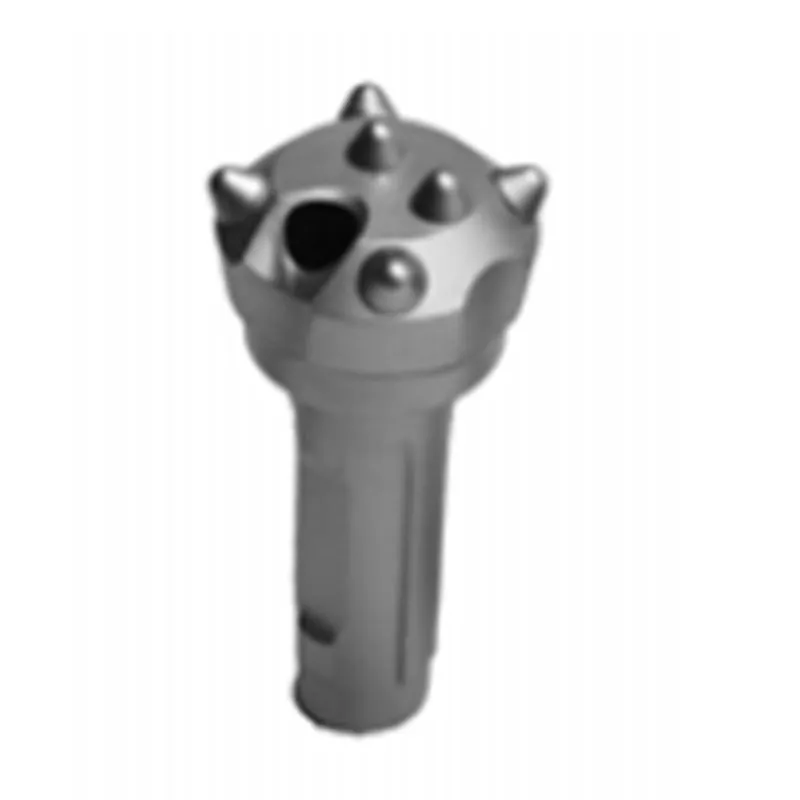
Figure 2: MC Low air Pressure DTH Bits performing in a quarrying application.
Technical Advantages and Operational Benefits of MC Low Air Pressure DTH Bits
The adoption of MC Low air Pressure DTH Bits brings forth a cascade of technical advantages and operational benefits that directly translate into significant cost savings, enhanced sustainability, and improved overall drilling performance. Foremost among these is the Reduced Air Consumption and Energy Efficiency. By design, these bits operate optimally at lower pressures (typically 7-15 bar) compared to high-pressure bits (20-35 bar). This fundamental difference means that the compressor, which is often the largest energy consumer on a drill rig, requires less power to generate the necessary air volume and pressure. For diesel-powered rigs, this directly reduces fuel consumption, leading to substantial savings on operating costs and a lower carbon footprint. For electric rigs, it means reduced electricity consumption and lower demand charges. This energy saving is not marginal; studies often indicate reductions of 15-30% in fuel/power consumption for the air compressor, a major component of drilling costs. Linked to lower air consumption is the Reduced Wear and Tear on Equipment. Operating at lower pressures puts less strain on the air compressor, air hoses, and other pneumatic components of the drill rig. This leads to extended maintenance intervals, reduced component replacement costs, and a longer overall lifespan for the drilling equipment. The lower impact energy, while still effective for rock breakage, also subjects the DTH hammer and drill string to less stress, minimizing fatigue and extending their operational life. Another critical advantage is the Improved Hole Straightness and Accuracy. Lower air pressure systems tend to create less turbulent airflow and a more controlled percussive action. This often results in straighter boreholes, which is particularly vital for applications requiring high precision, such as pre-split blasting, foundation piling, or certain tunneling projects. Improved hole straightness reduces the need for re-drilling or correctional measures, saving time and money. The efficiency of Cuttings Evacuation is also optimized. Despite lower air volumes, the sophisticated design of the bit face and flushing holes in MC Low air Pressure DTH Bits ensures efficient removal of rock cuttings. This prevents re-grinding of material at the bottom of the hole, which would otherwise consume energy, reduce penetration rates, and accelerate bit wear. Effective flushing maintains a clean drilling environment, allowing the bit to consistently engage fresh rock. Furthermore, the Enhanced Service Life of the Bit itself is a significant benefit. While exact figures depend on rock type and drilling conditions, the optimized design for lower impact energy, combined with high-quality materials and precise manufacturing, often leads to an extended bit life. This reduces the frequency of bit changes, minimizing downtime for the rig and associated labor costs, thereby increasing overall productivity. Manufacturers of MC Low air Pressure DTH Bits often leverage advanced metallurgy and carbide insertion techniques, resulting in bits that can withstand prolonged use in abrasive conditions. Finally, Reduced Noise Levels contribute to a better working environment and compliance with environmental regulations. Lower air pressure translates to less air expanding rapidly from the exhaust, resulting in a quieter operation. This is particularly advantageous in urban construction sites or environmentally sensitive areas where noise pollution is a concern. In essence, while the initial investment in low-pressure DTH systems might be comparable, the long-term operational savings stemming from reduced energy consumption, extended equipment life, and improved drilling efficiency position MC Low air Pressure DTH Bits as a technologically superior and economically compelling choice for modern drilling operations seeking to optimize their bottom line and environmental performance.
Manufacturer Comparison and Strategic Selection of MC Low Air Pressure DTH Bits
When sourcing MC Low air Pressure DTH Bits, discerning between manufacturers is crucial, as the quality, performance, and longevity of the bits can vary significantly. While direct naming of competitors is beyond the scope, a comparison framework based on key differentiators can guide B2B decision-makers. A premium manufacturer of MC Low air Pressure DTH Bits distinguishes itself through several critical aspects, starting with Research and Development (R&D) and Innovation. Leading manufacturers continuously invest in R&D to refine bit designs, experiment with new materials, and optimize manufacturing processes. This includes advanced computational fluid dynamics (CFD) for flushing channel optimization, finite element analysis (FEA) for structural integrity, and extensive field testing. Their commitment to innovation often results in patented designs that offer superior penetration rates, extended bit life, or enhanced performance in specific rock types compared to generic alternatives. Next, Material Quality and Sourcing are paramount. Reputable manufacturers use only the highest-grade alloy steels for the bit body and premium tungsten carbide for the buttons. They often have long-standing relationships with certified material suppliers, ensuring consistency in material properties. Inferior materials can lead to premature wear, button loss, or bit body breakage, costing significant downtime and replacement expenses. Manufacturers committed to quality will provide material specifications and certifications (e.g., ISO, ASTM, DIN standards) as part of their transparency. Manufacturing Precision and Quality Control are non-negotiable. As detailed in the craftsmanship section, the use of advanced CNC machining, precision heat treatment, and robust quality control protocols (like ISO 9001 certification) are hallmarks of a superior manufacturer. They will employ comprehensive inspection regimes at every stage, from raw material incoming inspection to final product verification, ensuring every bit meets stringent performance criteria. This attention to detail results in consistent product quality, reducing variability and enhancing reliability in the field. Customization Capabilities are another distinguishing factor. While standard MC Low air Pressure DTH Bits serve many applications, specific drilling conditions (e.g., extremely abrasive rock, highly fractured ground, or unique borehole requirements) may necessitate tailored solutions. A top-tier manufacturer can offer bespoke bit designs, adjusting face profiles, button patterns, or carbide grades to optimize performance for challenging geological conditions, demonstrating their deep technical expertise and client-centric approach. Lastly, After-Sales Support and Technical Expertise are crucial. This includes responsive technical support, readily available spare parts, and on-site consultation services. A manufacturer that stands by its products offers comprehensive warranties and has a team of experienced drilling engineers who can provide guidance on bit selection, troubleshooting, and optimization strategies. They will have a proven track record (e.g., service history over many years, positive customer testimonials) and a global distribution network to ensure timely delivery and support, building long-term trust and partnership with their clients. By evaluating potential suppliers against these criteria, B2B buyers can strategically select MC Low air Pressure DTH Bits that not only meet their immediate operational needs but also contribute to long-term efficiency, cost reduction, and sustainable drilling practices. This diligent selection process minimizes risks associated with sub-par tooling and maximizes the return on investment in drilling equipment.
Key Differentiators in MC Low Air Pressure DTH Bit Manufacturing
| Feature Category | Premium Manufacturer | Standard Manufacturer |
|---|---|---|
| R&D and Innovation | Continuous investment in advanced simulations (CFD, FEA), new material research, patented designs. | Limited R&D, often replicates existing designs, focuses on cost. |
| Material Sourcing & Quality | Partnerships with certified, high-purity alloy steel and premium tungsten carbide suppliers. Material certifications provided. | May use generic or lower-grade materials to reduce production cost. Material certifications often unavailable. |
| Manufacturing Process & QC | Advanced CNC machining, precise multi-stage heat treatment, ISO 9001 certified QC at every stage, NDT. | Basic machining, less precise heat treatment, minimal QC leading to inconsistent product quality. |
| Customization & Flexibility | Offers bespoke bit designs, adjusts parameters for specific geological conditions and client needs. | Limited or no customization options, only standard off-the-shelf products. |
| After-Sales Support & Warranty | Responsive technical support, on-site consultation, comprehensive warranty, global service network. Years of service. | Minimal or slow support, limited warranty, focus on one-off sales rather than long-term partnership. |
| Performance & Service Life | Consistently high penetration rates, exceptional bit life (15-30% more meters), predictable wear patterns. | Inconsistent performance, shorter bit life, unpredictable failures, higher cost per meter drilled. |
Tailored Solutions: Customizing MC Low Air Pressure DTH Bits for Optimal Performance
While standard MC Low air Pressure DTH Bits are designed to meet a broad range of drilling needs, true optimization often lies in the ability to provide customized solutions. The diverse and unpredictable nature of geological formations, coupled with varied operational requirements, necessitates a flexible approach to DTH bit design. A leading manufacturer understands that a "one-size-fits-all" mentality rarely delivers peak efficiency or cost-effectiveness in challenging drilling environments. Therefore, offering tailored MC Low air Pressure DTH Bits is a hallmark of expertise and a commitment to client success. The customization process typically begins with an in-depth geological and operational analysis. This involves understanding the specific rock type (e.g., hardness measured by Mohs scale or UCS, abrasivity, fracturability), the presence of water or highly fractured zones, the type of drilling rig and hammer being used, and the desired outcome (e.g., maximum penetration rate, longest bit life, hole straightness, or lowest cost per meter). This detailed data collection forms the basis for design recommendations. Based on this analysis, engineers use advanced Computer-Aided Design (CAD) and simulation tools to modify existing bit designs or create entirely new ones. Customization can involve several parameters. The bit face design can be altered: for instance, a more aggressive convex face might be suitable for softer, less abrasive rocks to maximize penetration, while a reinforced flat face with robust gauge buttons would be preferred for extremely hard and abrasive formations like granite or quartzite, enhancing wear resistance. The button configuration and carbide grade selection are also key areas of customization. For very hard rock, larger, more impact-resistant hemispherical or parabolic buttons made from a tougher carbide grade might be chosen for durability. In contrast, for softer, non-abrasive rocks, smaller, more numerous ballistic buttons could be used to increase penetration rate. The number, size, and specific placement of gauge buttons around the bit perimeter can be adjusted to maintain hole diameter accuracy and reduce gauge wear, especially crucial in highly abrasive ground conditions. Furthermore, the flushing hole design can be optimized. In sticky or highly fractured ground, enlarged or re-positioned flushing holes might be necessary to ensure efficient chip evacuation at low air pressure, preventing bit plugging and re-drilling. For very wet conditions, specialized air and water flushing channels can be integrated to handle slurry effectively. The shank design might also require minor adjustments for specific hammer models, ensuring a perfect fit and maximum energy transfer. Beyond design, customization extends to material selection and heat treatment processes. While standard bits use high-grade alloys, for exceptionally demanding applications, a manufacturer might propose specific alloy compositions or unique heat treatment cycles to enhance certain properties like toughness or surface hardness, further extending the bit's service life. The ultimate step in a customized solution is often field testing and iterative refinement. The prototype bits are tested under actual operating conditions, and performance data is collected. Based on this feedback, the design can be fine-tuned to achieve optimal results. This collaborative approach between the client and the manufacturer ensures that the customized MC Low air Pressure DTH Bits are not just theoretically superior but proven to deliver tangible benefits in the specific operational context. This commitment to tailored solutions significantly enhances drilling efficiency, reduces overall costs, and reinforces the manufacturer's position as a reliable and expert partner in the drilling industry.
Real-World Impact: Application Cases and Success Stories of MC Low Air Pressure DTH Bits
The theoretical advantages of MC Low air Pressure DTH Bits are powerfully underscored by their performance in various real-world application cases, demonstrating tangible benefits in terms of cost reduction, efficiency gains, and environmental impact. These success stories provide compelling evidence of their value proposition for B2B clients. Consider a large-scale Quarrying Operation in the American Midwest facing escalating fuel costs and a drive for greener operations. This quarry, primarily extracting limestone and dolomite, historically used high-pressure DTH bits for its blast hole drilling, operating compressors at 25 bar. Upon transitioning to MC Low air Pressure DTH Bits compatible with their existing low-pressure hammers (or retrofitting with low-pressure hammers), they were able to reduce their compressor operating pressure to 12 bar. The result was an immediate 20% reduction in diesel fuel consumption for their drilling fleet, translating to significant annual savings and a notable decrease in CO2 emissions. Furthermore, the specialized design of the MC Low air Pressure DTH Bits for softer rock formations led to a 10-15% increase in penetration rates, allowing them to complete their daily drilling quota faster and increase overall production efficiency. Another compelling case comes from a Construction Project in a Densely Populated European City. This project involved drilling numerous foundation piles and pre-split holes for controlled blasting adjacent to residential areas and sensitive infrastructure. Noise pollution was a major concern, subject to strict local regulations. By deploying rigs equipped with MC Low air Pressure DTH Bits, the construction company was able to reduce the perceived noise level from their drilling operations by approximately 5-7 dB (A), a significant reduction that helped them comply with local ordinances and mitigate public complaints. Beyond noise, the improved hole straightness offered by the low-pressure bits ensured higher accuracy for their foundation piles, minimizing concrete over-consumption and structural rework, which directly impacted project timelines and material costs. In the Mining Sector, specifically an open-pit iron ore mine in Western Australia, the challenge was the highly abrasive nature of the rock, leading to frequent bit changes and considerable downtime. After a pilot program with custom-designed MC Low air Pressure DTH Bits featuring specialized carbide button grades and an optimized gauge protection, the mine reported an average increase of 30% in bit life compared to their previous high-pressure bits. This extension of bit life drastically reduced the number of bit changes required per shift, leading to a 15% increase in drill rig utilization and a significant reduction in overall drilling consumables expenditure. The client feedback highlighted the predictability of bit wear, allowing for better planning of maintenance and resupply. These case studies exemplify how MC Low air Pressure DTH Bits are not just a product but a solution that directly addresses core operational challenges faced by B2B clients across various industries, providing a clear return on investment through enhanced efficiency, reduced costs, and improved sustainability metrics. The consistent positive results from these diverse applications reinforce the authoritative position of these specialized bits in modern drilling technology.
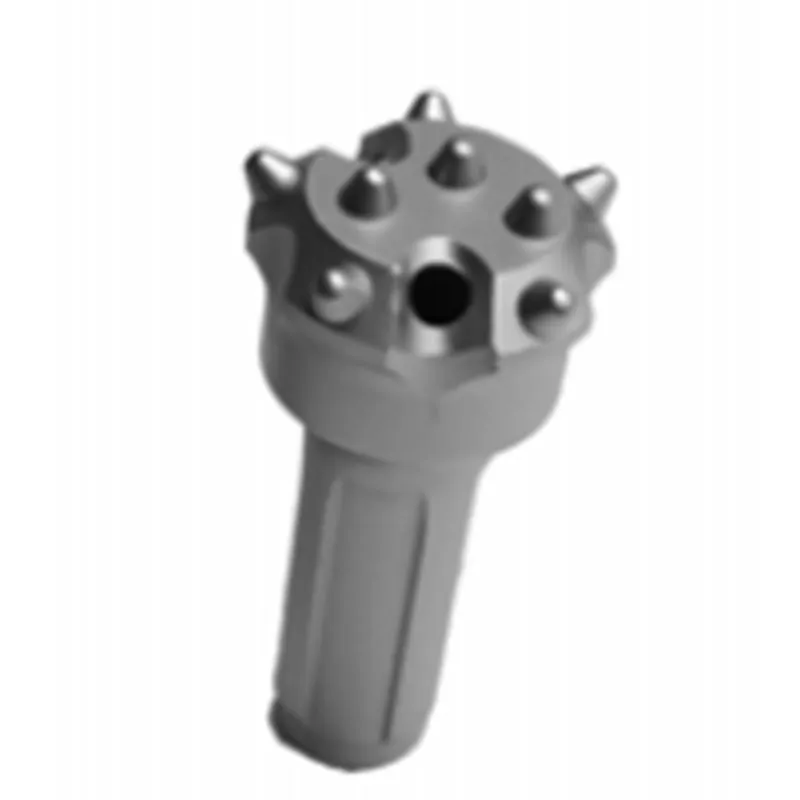
Figure 3: Close-up of a manufactured MC Low air Pressure DTH Bit highlighting its robust design and button configuration.
Ensuring Trust: Quality Assurance, Delivery, and Customer Support for MC Low Air Pressure DTH Bits
Building and maintaining trust with B2B clients is paramount, especially for critical drilling consumables like MC Low air Pressure DTH Bits. This trust is underpinned by a commitment to robust quality assurance, reliable delivery logistics, and responsive customer support. A reputable manufacturer adheres to stringent Quality Assurance (QA) protocols that span the entire product lifecycle, from raw material procurement to final product inspection. This includes sourcing materials from ISO-certified suppliers, conducting comprehensive material composition analysis, and implementing multiple in-process checks during manufacturing. For instance, detailed dimensional checks using precision instruments ensure that every bit conforms to ANSI or equivalent international standards for shank dimensions, bit diameter, and button protrusion. Hardness testing (both Rockwell and Vickers) is routinely performed on the bit body and tungsten carbide inserts to verify proper heat treatment and material integrity. Non-destructive testing (NDT) methods like ultrasonic inspection or magnetic particle inspection may be employed to detect any internal flaws or surface cracks that could compromise performance. Every batch of MC Low air Pressure DTH Bits undergoes rigorous performance testing to ensure consistent penetration rates and wear characteristics in simulated drilling conditions. This multi-layered QA system, often certified to ISO 9001 standards, provides an authoritative guarantee of product quality and reliability. In terms of Delivery and Logistics, manufacturers understand that timely availability of consumables is critical to preventing costly downtime for drilling operations. This necessitates efficient inventory management, strategic warehousing, and a robust global distribution network. Order fulfillment processes are streamlined to ensure rapid turnaround times from order placement to dispatch. Collaborations with reputable logistics partners ensure secure and efficient transportation, whether by sea, air, or land, to client sites worldwide. Clear communication regarding lead times, shipping schedules, and customs clearance procedures is maintained with clients to manage expectations effectively. The commitment to prompt and reliable delivery minimizes operational disruptions and ensures that clients have the right tools, precisely when they need them. Lastly, Customer Support plays a pivotal role in establishing long-term trust. This encompasses pre-sales consultation, technical assistance during operation, and responsive after-sales service. Experienced drilling engineers are available to provide expert advice on selecting the most appropriate MC Low air Pressure DTH Bits for specific geological conditions and drilling equipment. This personalized guidance helps clients optimize their drilling parameters and troubleshoot any challenges encountered in the field. Post-purchase support includes addressing inquiries regarding bit performance, wear analysis, and warranty claims promptly and transparently. A strong warranty commitment, clearly outlining terms and conditions, further reinforces confidence in the product's durability and the manufacturer's accountability. This holistic approach to quality, logistics, and support ensures that clients receive not just a product, but a complete solution backed by expertise and reliability, fostering enduring partnerships within the drilling industry.
Frequently Asked Questions (FAQs) about MC Low Air Pressure DTH Bits
- Q: What is the primary advantage of using MC Low Air Pressure DTH Bits over high-pressure bits?
A: The main advantage is significantly reduced air consumption, leading to lower energy costs (fuel/electricity), reduced wear on compressors and drilling equipment, and often a quieter operation. They are optimized to perform efficiently with lower air input. - Q: Can MC Low Air Pressure DTH Bits be used with any DTH hammer?
A: They are designed for compatibility with low air pressure DTH hammers. While some manufacturers produce bits compatible with both, optimal performance is achieved when matched with a low-pressure specific hammer to fully leverage the system's efficiency. Ensure the shank type matches your hammer. - Q: How does bit life compare between low and high air pressure bits?
A: Due to optimized design for lower impact stress and efficient flushing, MC Low air Pressure DTH Bits often exhibit longer service lives, especially in abrasive conditions. Many users report 15-30% extended life compared to traditional high-pressure bits in similar rock types. - Q: Are these bits suitable for all rock types?
A: Yes, with appropriate face design and button configuration, MC Low air Pressure DTH Bits can be tailored for various rock types, from soft to extremely hard and abrasive formations. Customization options are available for challenging geology. - Q: What kind of support can I expect regarding delivery and technical assistance?
A: Reputable manufacturers offer comprehensive support including efficient global delivery logistics, pre-sales consultation for bit selection, and post-sales technical assistance for troubleshooting and performance optimization, backed by clear warranty terms.
Our Commitment: Delivery, Warranty & Support
We understand the critical importance of reliable supply and unwavering support in the drilling industry. Our commitment to clients purchasing MC Low air Pressure DTH Bits is multifaceted:
- Efficient Global Delivery: Leveraging a robust logistics network and strategic warehousing, we ensure timely and secure delivery of our MC Low air Pressure DTH Bits to your operational sites worldwide. Our streamlined order processing and transparent communication on lead times minimize your downtime and optimize your project schedules.
- Comprehensive Quality Warranty: Every MC Low air Pressure DTH Bit is manufactured under strict ISO 9001 certified quality management systems and undergoes rigorous testing. We stand behind the quality and performance of our products with a comprehensive warranty against manufacturing defects and premature failure under normal operating conditions. Specific warranty details are provided with each purchase agreement.
- Dedicated Customer & Technical Support: Our team of experienced drilling engineers and customer service professionals is available to provide unparalleled support. From assisting with the optimal selection of MC Low air Pressure DTH Bits for your specific geological conditions to offering expert advice on operational best practices and troubleshooting, we are committed to maximizing your drilling efficiency and success. Our service extends beyond the sale, ensuring long-term partnerships built on trust and mutual benefit.
Conclusion and Future Outlook in DTH Drilling Technology
The evolution of drilling technology continues to push the boundaries of efficiency, sustainability, and operational cost-effectiveness. The emergence and refinement of MC Low air Pressure DTH Bits represent a significant leap forward in this ongoing progression, offering a compelling alternative to traditional high-pressure drilling methods. As we have explored, their meticulously engineered design, coupled with advanced manufacturing processes, translates into concrete advantages: notably reduced energy consumption, extended bit life, lower equipment wear, and improved environmental compliance through decreased noise and emissions. These benefits are not merely theoretical but are consistently demonstrated in diverse, real-world applications across mining, quarrying, construction, and water well drilling sectors. The ability to achieve high penetration rates and maintain hole quality with significantly less air input positions low air pressure DTH systems as a cornerstone of modern, responsible drilling practices. Looking ahead, the trajectory of DTH drilling technology will likely continue its focus on smart, automated, and greener solutions. We anticipate further innovations in material science, leading to even more durable and wear-resistant carbide grades and bit body alloys. Digital integration, including real-time performance monitoring and predictive maintenance analytics, will become standard, allowing operators to optimize bit usage and plan replacements with unprecedented accuracy. Furthermore, as industries worldwide face increasing pressure to reduce their carbon footprint, the inherent energy efficiency of MC Low air Pressure DTH Bits will make them an increasingly attractive and indeed, indispensable, component of sustainable drilling fleets. The drive for greater precision, particularly in complex urban or deep drilling environments, will also spur further refinement in bit face designs and flushing mechanisms. Ultimately, the future of drilling lies in achieving more with less—less energy, less waste, and less environmental impact—while simultaneously maximizing productivity and profitability. MC Low air Pressure DTH Bits are not just meeting this challenge; they are actively shaping the path forward, demonstrating that economic efficiency and environmental responsibility can, and must, go hand in hand in the resource extraction and construction industries. As such, investing in these advanced drilling tools is not merely a purchase; it is a strategic step towards a more efficient, sustainable, and profitable future for any drilling operation.
References and Further Reading
- Journal of Mining Efficiency & Sustainability: Innovations in DTH Drilling.
- Geotechnical Engineering Review: Advances in Percussion Drilling Technology for Varied Rock Formations.
- Global Drilling Technology Forum: The Impact of Low Pressure Systems on Operational Costs.
- Construction Materials & Methods Magazine: Selecting Optimal DTH Bits for Urban Infrastructure Projects.
- Energy Efficiency in Industrial Operations: A Comparative Study of Compressed Air Systems.
-
Volute Liner Materials for Extended Slurry Pump Life
NewsAug.12,2025
-
Tracked Chassis Design for Off-Road DTH Drilling Rigs
NewsAug.12,2025
-
Single-Person Operation Features in Borehole Machines
NewsAug.12,2025
-
Hydraulic Efficiency Analysis of Slurry Pump Impellers
NewsAug.12,2025
-
High-Chrome White Iron Alloys for Abrasion-Resistant Pumps
NewsAug.12,2025
-
Drill String Tension Analysis in Ultra-Deep Boreholes
NewsAug.12,2025




